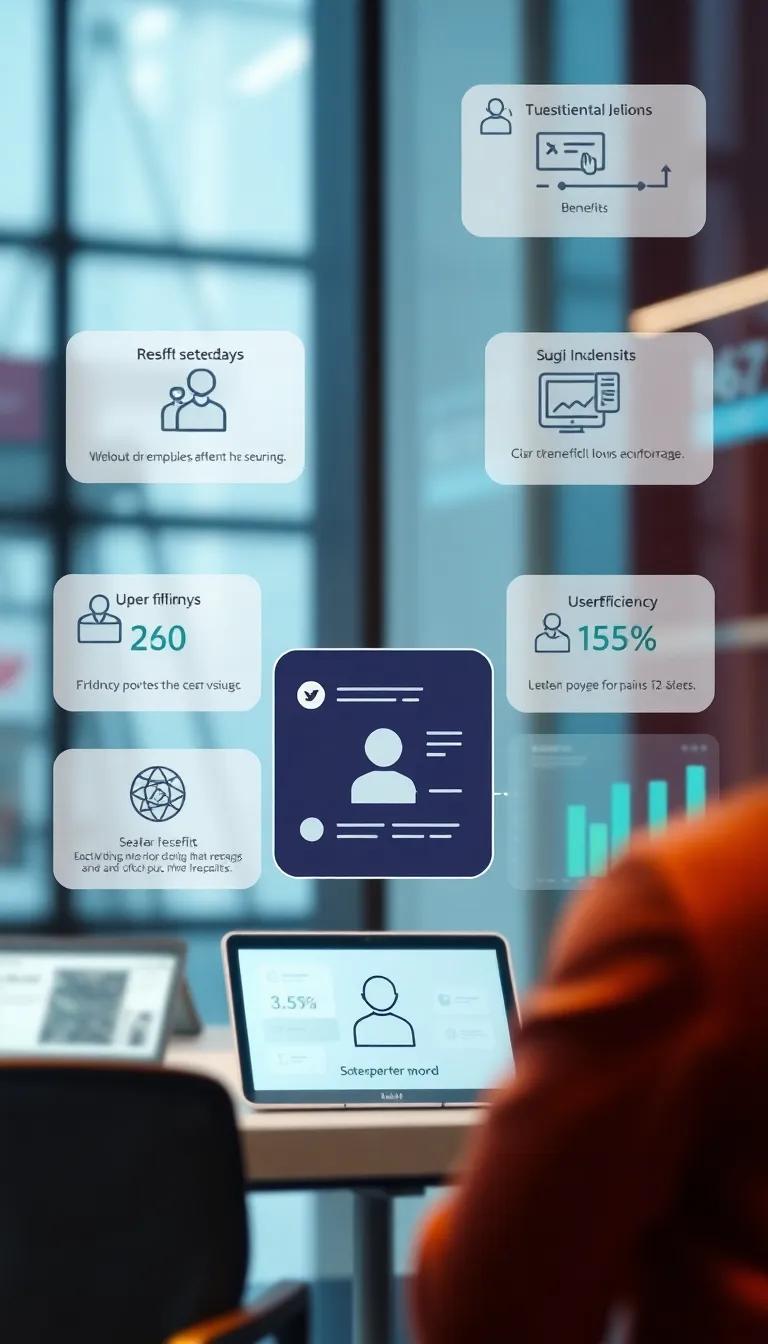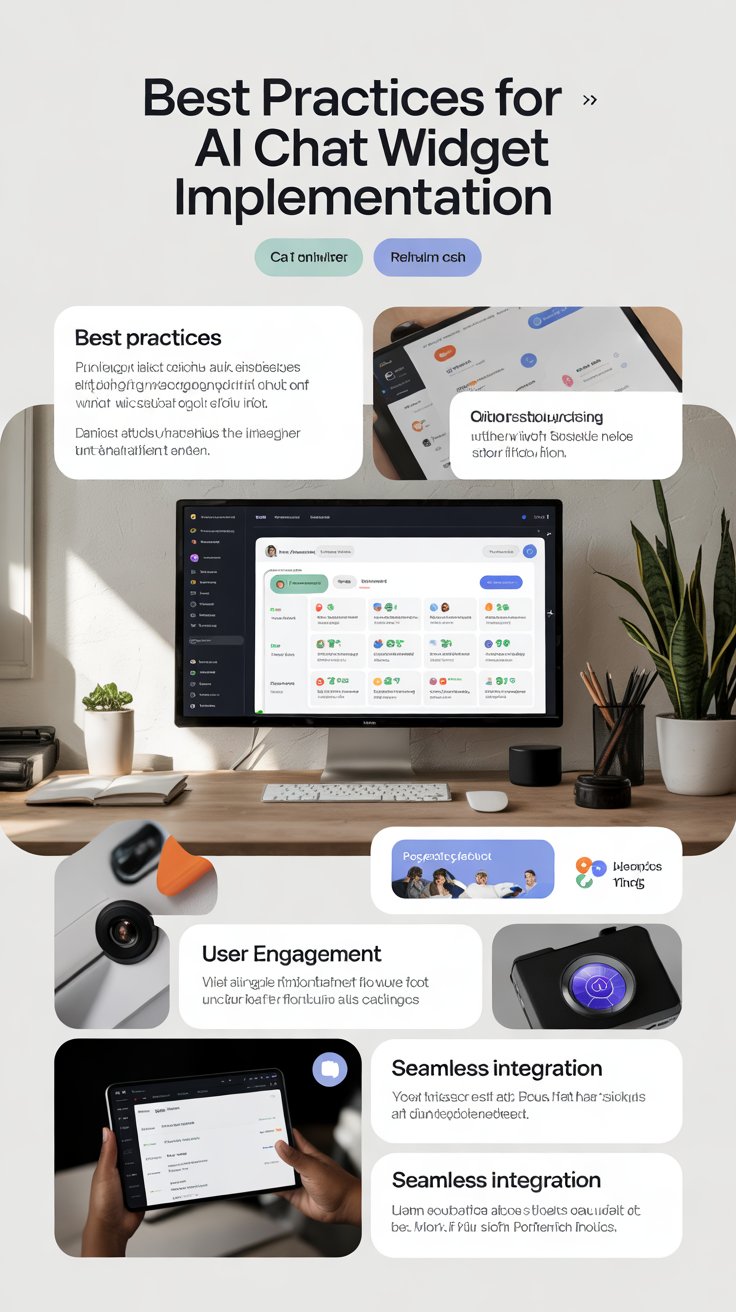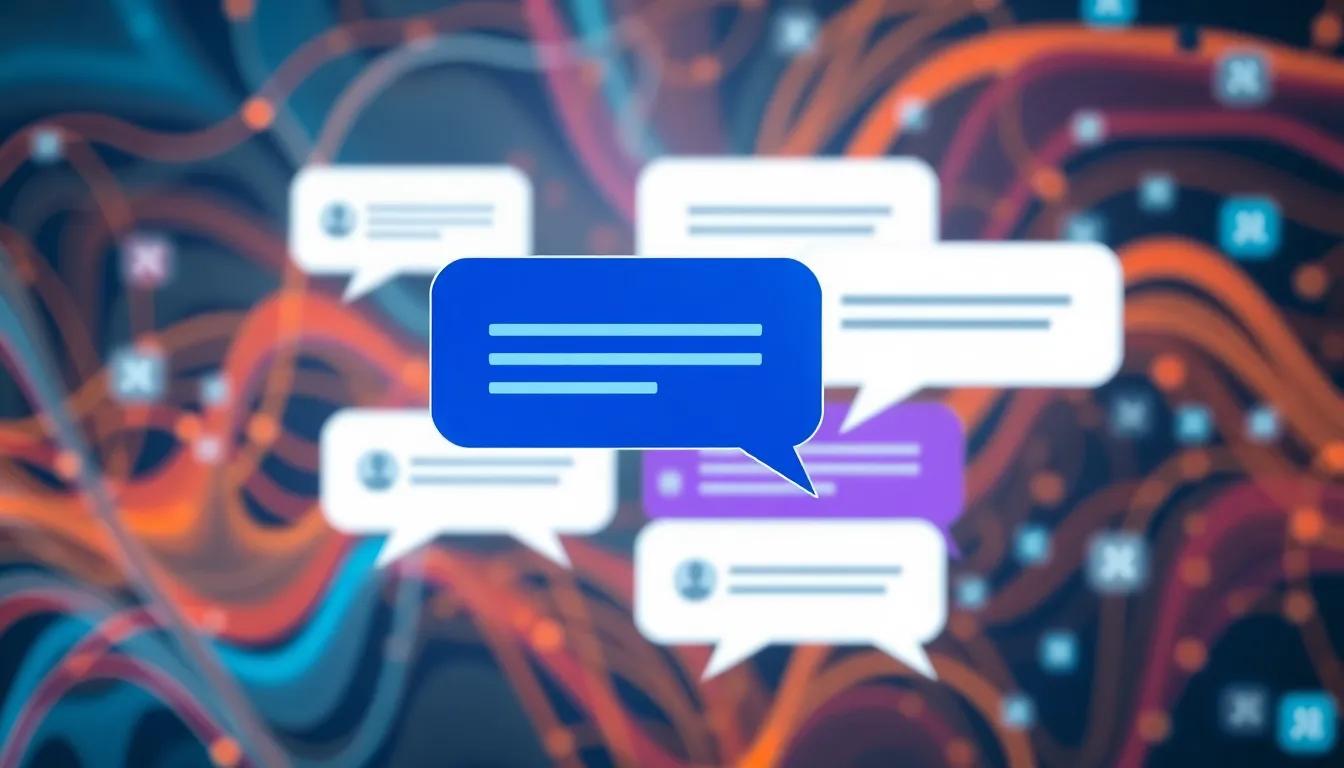Introduction
Maximizing engagement on websites is crucial for businesses seeking to attract and retain visitors. One innovative tool that has gained popularity is the AI chat widget. These widgets serve as virtual assistants, offering immediate responses and support to users, ultimately enhancing their experience. Replace traditional methods of communication with real-time interactions, which not only address user inquiries but also guide them through complex processes. This seamless communication is critical in reducing bounce rates and encouraging users to spend more time on a website.
The implementation of AI chat widgets goes beyond just support; it enables personalized experiences tailored to individual user needs. By collecting data from interactions, businesses can better understand their audience, adapt their content, and anticipate user behavior. As this article explores the various aspects of AI chat widget innovations, we will delve into their functionalities, the advantages they offer for free website engagement, and best practices for their effective deployment.
Understanding AI Chat Widgets Innovations Driving Free Website Engagement
AI chat widgets are sophisticated tools integrated into websites, designed to facilitate real-time communication between users and brands. Unlike traditional chat systems that rely heavily on pre-defined responses and human operators, AI chat widgets utilize machine learning algorithms and natural language processing to provide a dynamic, intuitive conversation experience. This technology not only allows for instant responses but also learns from user interactions to improve its conversational capabilities over time.
The core functionalities of AI chat widgets include 24/7 availability, the ability to handle multiple inquiries simultaneously, and personalized interactions tailored to user preferences. They can perform various tasks, such as answering frequently asked questions, guiding users through complex processes, and even providing product recommendations based on user behavior. This stands in stark contrast to older chat systems, which often require users to wait for a human representative or are limited to basic scripted answers.
The evolution of AI chat widgets is rooted in several technological trends that have paved the way for their existence. The rise of big data analytics has allowed for the collection and analysis of vast amounts of user information, enabling chat widgets to offer personalized experiences. Meanwhile, advancements in natural language processing have made it possible for these widgets to understand and interpret user intentions with greater accuracy. The advent of cloud computing has also played a crucial role, as it allows for the storage and processing of data at scale, ensuring seamless operation of these chat functionalities.
The growing emphasis on customer experience has driven businesses to seek innovative solutions to enhance user engagement. As users increasingly expect immediate assistance and personalized interaction, AI chat widgets have emerged as a viable alternative that meets these demands effectively. In many cases, businesses are seeing improved user satisfaction and engagement rates as a direct result of implementing these advanced chat solutions.
Understanding the workings of AI chat widgets highlights their importance in modern digital interactions. By moving from traditional chat models to AI-driven solutions, companies can enhance engagement and ultimately drive improved retention on their websites, creating a more robust online experience for users.
Benefits of AI Chat Widgets for Websites Enhancing User Experience and Operational Efficiency
The integration of AI chat widgets into websites has proven to be a transformative element in enhancing both user experience and operational efficiency. These widgets facilitate more meaningful interactions between visitors and site owners, elevating the overall web engagement significantly.
Enhanced User Experience
One of the primary advantages of implementing AI chat widgets is the dramatic improvement in user experience. Unlike traditional chat solutions that often involve human agents, AI chat widgets can offer instant responses to user inquiries. This immediate interaction reduces the frustration of waiting for help, making navigation smoother and more intuitive.
AI chat widgets are designed to understand natural language, enabling users to engage in conversations that feel more human-like. This feature promotes a positive interaction as users feel heard and understood, which enhances their journey through the website. Utilizing personalized greetings, tailored responses, and contextual recommendations, these widgets can address user needs effectively, thereby fostering a deeper connection with the brand.
Operational Efficiency
Beyond improving user experience, AI chat widgets drive operational efficiency by automating repetitive tasks and queries. They can handle a multitude of inquiries simultaneously, allowing businesses to manage high volumes of interaction without the need for extensive human resources. This capability not only cuts down on operational costs but also frees up human agents to focus on more complex issues that require human intervention.
Implementing AI chat widgets into customer service leads to reduced workload and increased productivity. With the ability to learn from past interactions, these widgets continuously improve their performance over time, offering more accurate responses and recommendations. This adaptive learning ability not only enhances user satisfaction but also contributes to better data collection and analysis for businesses, leading to informed decision-making.
These chat widgets can provide valuable insights into user behavior and preferences, allowing website owners to tailor content, product offerings, and marketing strategies based on real-time data. By identifying trends and patterns, businesses can optimize their operations to serve users better and increase conversion rates.
The benefits of AI chat widgets extend beyond customer engagement; they encapsulate enhanced user experience and improved operational efficiency, making them a pivotal component in modern website strategies. The evolving capabilities of these tools signify a shift towards a more interactive and responsive digital presence, ultimately encouraging higher user retention rates and satisfaction levels.
Features that Drive User Engagement Enhancing AI Chat Widget Interactivity
Key Features to Enhance Engagement Levels on Websites
AI chat widgets have transformed the way users interact with websites, offering a modern approach to communication that resonates with users. To maximize engagement and retention, understanding the features that drive user interaction is paramount. One of the most significant features is personalized greetings. By tailoring the initial message to the user’s behavior or context, the chat widget creates an immediate connection, increasing the likelihood of interaction. For instance, a user returning to a site may be greeted with “Welcome back! How can we assist you today?” This personal touch can significantly improve user satisfaction.
Another critical feature is proactive chat invitations. These prompts, triggered by users’ activity or time spent on a page, encourage interaction before a user even considers asking for help. The timing and context of these invitations can keep users engaged, preventing them from navigating away from the site. Additionally, when users see a confirmation message like “I’m here if you need anything,” it alleviates the pressure of having to start a conversation from scratch.
Incorporating multilingual support further enhances the accessibility and engagement levels of the chat widget. As global audiences converge on websites, providing options for users to communicate in their preferred language can yield higher satisfaction rates. Users feel more comfortable expressing themselves in a language they are fluent in, which can lead to richer conversations and ultimately, greater retention.
Integrative capabilities with existing CRM systems can also drive engagement. By allowing the chat widget to pull data from customer profiles, users can receive personalized recommendations and timely assistance. An effective example could involve the chat widget suggesting related products based on previous purchases, leading users to more engaged browsing experiences.
Utilizing artificial intelligence to enhance self-service options is paramount. Features like FAQs and knowledge bases integrated within the chat widget can resolve common queries quickly, reducing wait times and empowering users to find solutions independently. This iterative self-service approach not only maintains engagement but also builds user confidence in navigating the site.
Integrating these innovative features within AI chat widgets underscores the importance of creating a dynamic and engaging user experience, pivotal for maximizing website interaction and retention.
Best Practices for Implementing AI Chat Widgets Guidelines for Effective Website Engagement
Choosing the Right AI Chat Widget
To optimize free website engagement through AI chat widgets, the selection process is pivotal. Prior to implementation, it is advisable to identify the specific needs of your audience. Define the primary objective of the chat widget: Will it serve primarily for customer support, gathering leads, or engaging users through conversational marketing? Understanding your goals will guide you toward selecting a widget that offers features aligned with your strategy.
When evaluating options, pay attention to the customization capabilities of each widget. A highly customizable chat interface allows you to align the chat widget’s design and language with your brand identity. Users are more likely to interact positively with a chat tool that feels seamless and integrated within your website’s aesthetic. Evaluate whether the widget provides tools for personalizing interactions, such as using past conversation history or user data to tailor responses.
Implementing AI Chat Widgets Effectively
Once a suitable AI chat widget is selected, the next step is effective implementation. Start with a strategic placement of the chat widget on your website. Research shows that users are more likely to engage when widgets appear in contextually relevant locations, such as on landing pages or within checkout processes. Avoid overwhelming users with constant chatbot prompts; instead, consider employing timed pop-ups or basing triggers on user behavior to create a more natural interaction flow.
Another key factor is ensuring that the conversation capabilities are well-defined. Programs should be speech-enabled, understand common inquiries, and provide accurate and swift responses. Incorporating natural language processing capabilities will enhance user experience by making interactions feel more human-like. Regularly update the knowledge base of the chat widget to ensure it stays relevant and aligned with user expectations.
Assess the performance of your AI chat widget post-implementation. Use analytics tools to monitor user interactions and uncover insights regarding engagement rates and areas for improvement. It may also be beneficial to solicit feedback directly from users about their experience, allowing for iterative enhancements over time. Understanding how users interact with the chat widget will inform future adjustments, ensuring that your implementation continues to drive user interaction and retention effectively.
Measuring the Impact of AI Chat Widgets Key Metrics and KPIs for User Interaction
Assessing Performance of AI Chat Widgets in Enhancing Engagement
AI chat widgets have become invaluable tools for website engagement, driving user interaction and retention. However, to truly understand their effectiveness, businesses must implement a robust framework for measuring performance. Metrics and key performance indicators (KPIs) provide concrete data that highlights how well these tools are functioning for both users and the website as a whole.
First and foremost, engagement rate is a crucial metric, indicating how frequently visitors engage with the chat widget. This can be calculated by dividing the number of users who interact with the widget by the total number of website visitors. A high engagement rate typically signifies that the chat widget is not only visible but also compelling enough to draw users in.
Response time is another vital KPI. Users expect quick responses, and a lower average response time correlates with higher satisfaction levels. Monitoring response time can help identify potential bottlenecks in the interaction process, leading to swift solutions and better user experiences.
Customer satisfaction scores gathered through post-interaction surveys provide direct insight into user experiences. By inviting feedback, businesses can understand the strengths and weaknesses of their chat systems and make data-driven decisions for improvements. These scores can also help compare different chat widgets, assisting in the selection of the most effective one for specific needs.
Conversion rates serve as a critical measure of an AI chat widget’s success. By tracking how many users who engage with the chat go on to complete desired actions, such as making a purchase or signing up for newsletters, businesses can better gauge the effectiveness of their chat interventions.
Retention rates are also significant. Tracking how frequently returning users engage with the chat widget can reveal long-term effects on user loyalty. A sustained engagement implies that the chat widget is building a relationship with users, encouraging consistent interaction.
Analyzing the sentiment of user interactions can provide qualitative insights into user feelings and attitudes toward the brand. This is crucial for gauging overall brand perception and refining messaging strategies within the chat widget.
Establishing these metrics allows businesses to continuously refine their AI chat widget implementations, ensuring they align with customer needs and changing market dynamics. Therefore, the focus on comprehensive measurement is not merely advisable but fundamental for success in the competitive landscape of digital engagement.
Challenges in AI Chat Widget
The integration of AI chat widgets into websites has transformed user engagement; however, the process presents notable challenges that can hinder success. Businesses must be equipped to face these obstacles to fully leverage the potential of AI chat widgets for nurturing user interaction and retention.
Technical Integration Hurdles
One of the primary challenges businesses encounter is the technical integration of AI chat widgets into existing website infrastructures. Compatibility issues with current client management systems or platforms can lead to delays and increased costs. Solutions for this challenge include conducting rigorous pre-implementation assessments to identify potential technical conflicts. Engaging with developers who specialize in AI technologies can facilitate smooth integrations, streamlining the setup process and ensuring that the chat widget is effectively aligned with the website’s architecture.
Data Privacy and Compliance Issues
Another significant concern revolves around data privacy. Regulations such as GDPR and CCPA impose strict guidelines on how user data can be collected and utilized. Businesses must ensure that their AI chat solutions are compliant with these laws, which can sometimes be complex. Overcoming this challenge necessitates consulting with legal experts to develop privacy policies that meet compliance standards, while also informing users about data handling practices transparently. Employing encryption techniques to secure user data enhances trust and encourages engagement through the chat widget.
User Experience and Training
While AI chat widgets are designed to improve user experiences, poorly configured bots can lead to frustration and disengagement. Challenges arise from chatbot responses not aligning with user intent or failing to address queries adequately. To mitigate this issue, continuous training of the AI chat system is vital. Utilizing analytics to monitor conversations can help identify frequent user pain points. Based on real-time data, businesses can tune the AI responses to provide clearer, more relevant answers, thereby increasing user satisfaction and retention.
Cost and Resource Allocation
Implementing AI chat solutions can represent a significant investment, particularly for small to medium enterprises. Limited budgets can restrict the range of functionalities offered by chat widgets. Allocation of resources for the development and maintenance of these tools is crucial. Businesses should evaluate the potential return on investment (ROI) early on, ensuring that the outcomes justify the financial commitments. Adopting a phased implementation plan can facilitate staged investments while assessing performance and making necessary adjustments along the way.
Each of these challenges, while significant, can be addressed through strategic planning and resource management. As AI chat widget technologies evolve, businesses can capitalize on these opportunities to enhance website engagement and accomplish their engagement goals.
The Future of AI Chat Widgets Speculating on Innovations Driving Free Website Engagement
Anticipated Evolution of AI Chat Widget Technology
The landscape of AI chat widget technology is poised for substantial transformation, driven primarily by user demand and advances in artificial intelligence. Future innovations will likely focus on enhancing personalization and seamless integration into the user experience. With machine learning algorithms becoming more sophisticated, chat widgets are expected to understand and anticipate user needs with greater accuracy. For instance, they might utilize contextual awareness to differentiate between a user’s casual browsing and serious inquiries, providing tailored responses based on the interaction’s context.
Natural language processing advancements will enable chat widgets to engage in more fluid, human-like conversations. This could involve recognizing slang, idioms, and regional dialects, allowing brands to foster deeper connections with diverse audiences. As a result, enhanced emotional intelligence in chat interactions may not only improve customer satisfaction but also boost user engagement, making each interaction feel more meaningful and less transactional.
Potential Impacts on User Engagement
The future of AI chat widgets also anticipates innovations that integrate voice and visual capabilities. Imagine widgets that can process voice commands or utilize video responses to create a more engaging experience. This will likely cater to users’ varying preferences in communication and elevate interaction quality. Furthermore, introducing augmented reality features could transform chat widgets into interactive tools, enabling users to visualize products or experiences in real-time.
As websites increasingly adopt chat widgets that blend functionality with innovative design, user retention is bound to improve. Predictive analytics are expected to play a vital role, providing insights into user behavior that empower businesses to refine their engagement strategies. This will help companies foster ongoing relationships with their audience, reducing churn rates by establishing long-term connections.
Integrating AI chat widgets with other digital tools, such as CRM systems and social media platforms, will enhance operational efficiency. Support teams will have access to enriched data, enabling them to provide timely and personalized assistance, which is essential in keeping users engaged. As we look to the future, the potential for AI chat widget technologies to revolutionize website engagement is significant, paving the way for more interactive, insightful, and enjoyable user experiences.
Conclusions
AI chat widgets present an exciting opportunity for businesses to engage users effectively and facilitate smooth communication. Their ability to provide immediate support and personalized interactions significantly enhances user satisfaction, which can lead to improved conversion rates and higher retention levels. By integrating these tools into their websites, businesses can create a dynamic environment that resonates with their audience.
As we have discussed, deploying AI chat widgets requires careful planning and strategy to ensure optimal performance. By understanding user needs, continuously improving functionalities, and leveraging data analytics, businesses can maximize the benefits of AI chat widgets and drive meaningful engagement on their websites. Embracing this technology will undoubtedly place companies at a competitive advantage in the ever-evolving digital marketplace.


















